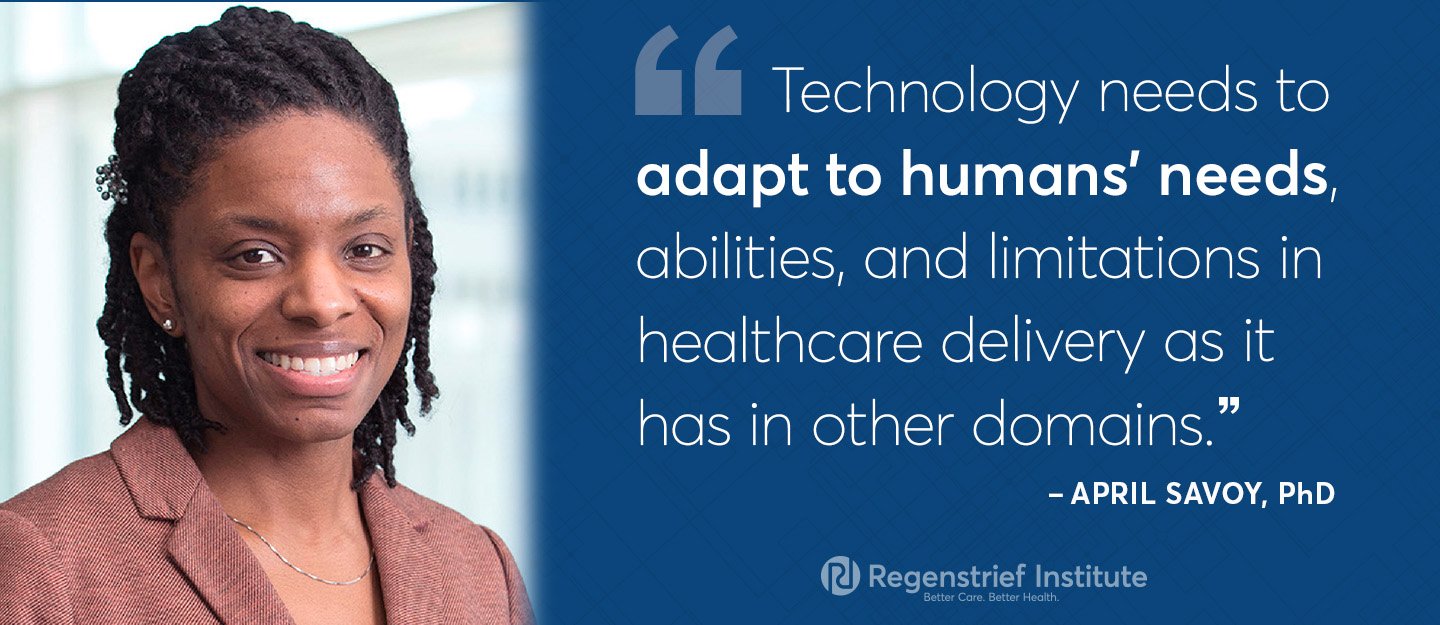Human factors approach to EHR design can improve patient care
Much needs to be accomplished during the short time a primary care physician sees a patient. A new study from U.S. Department of Veterans Affairs, Regenstrief Institute and IUPUI researchers reports that electronic health records (EHRs) are not rising to the challenges faced by primary care physicians because EHRs have not been designed or tailored to their specific needs. The study, a review and analysis of research on the topic conducted from 2012 to 2020, recommends implementing a human factors approach to the design or redesign of EHR user interfaces.
“The human mind can do many things well. Digesting vast amounts of patient information while multitasking in time-constrained situations exposes a limitation. EHR technology should be able to complement or enhance physicians’ abilities in these scenarios,” said Regenstrief Institute Research Scientist April Savoy, PhD, who led the new study. “But current EHRs are overloading primary care physicians with information in disparate files and folders rather than presenting comprehensive, actionable data in a context that gives meaning.
“Technology needs to adapt to humans’ needs, abilities, and limitations in healthcare delivery as it has in other domains. You can get the most advanced technology available – the fastest car, the smartest cell phone — but if it is not useful or if usability fails, users should not be forced to change their approach or work. The technology should be redesigned. Similarly, EHRs should be redesigned to improve situation awareness for busy primary care physicians and support their tasks including reviewing patient information, care coordination, and shared decision-making.”
Dr. Savoy is a health services researcher and human factors engineer. She notes that it can be easier for consumers to search online and order a pair of shoes in a desired size, color and style, than for primary care clinicians to order a specialty consult or medication refill. When interacting with EHRs, primary care physicians are typically faced with numerous impediments. For example, they are forced to navigate through multiple systems and tabs to find information, increasing redundancy and decreasing efficiency. EHRs’ lack of desired features ranges from advanced features such as interoperability to simple features such as auto-save, which are often default capabilities or added conveniences for online shopping.
She adds that EHRs have been tailored for specialists, operating rooms and hospitals but there has been a lack of attention, tailoring and design to fit the specific needs of the primary care physician whose effective decision-making is grounded in perception and comprehension of a patient’s dynamic situation. For example, a primary care physician’s decision to deprescribe (or stop) a medication could be informed by one measure or trends of patient’s blood pressure or cholesterol levels and other medications taken over a month. This type of information has implications for the patient’s future health trajectory.
“Electronic health records’ support for primary care physicians’ situation awareness: Metanarrative review” is published online ahead of print in Human Factors, the Journal of the Human Factors and Ergonomics Society. Authors, in addition to Dr. Savoy, are Himalaya Patel, PhD; Daniel R. Murphy, M.D., MBA; Ashley N.D. Meyer, PhD; Jennifer Herout, PhD; Hardeep Singh, M.D., MPH, all with the VA. The study was funded by the Human Factors Engineering Directorate in the Office of Health Informatics, U.S. Department of Veterans Affairs (VA).
To understand the extent to which EHRs support primary care physicians, the authors reviewed and analyzed studies describing EHR workflow misalignments, usability issues and communication challenges. Significant difficulties were reported related to obtaining clinical information from EHRs. Lab results and care plans were often incomplete, untimely or irrelevant. The study also included review of common clinical decisions and tasks related to care management of adult patients that are typically not supported by clinical decision support tools such as whether to start palliative care, predicting quality of life and recovery time, and tracking progress toward patients’ stated goals.
The authors conducted a metanarrative analysis which is more inclusive and open ended than a metanalysis. They found that primary care physicians’ experiences using EHRs often included redundant interaction and information overload, which they note could be remediated by incorporating user-centered design principles into future EHR design, development and evaluation.
About Richard L. Roudebush Veterans Affairs (VA) Medical Center
Established in 1932, the Richard L. Roudebush VA Medical Center serves Veterans from across Indiana and western Illinois. The Roudebush VAMC is one of the largest and most complex medical centers in the Department of Veterans Affairs, and provides acute inpatient medical, surgical, psychiatric, rehabilitation, and neurological care to more than 60,000 Veterans annually. Some of the many services available to Veterans include emergency medicine, primary care, cardiac care, radiation oncology, audiology, community-based extended care and community VA clinics.
About Regenstrief Institute
Founded in 1969 in Indianapolis, the Regenstrief Institute is a local, national and global leader dedicated to a world where better information empowers people to end disease and realize true health. A key research partner to Indiana University, Regenstrief and its research scientists are responsible for a growing number of major healthcare innovations and studies. Examples range from the development of global health information technology standards that enable the use and interoperability of electronic health records to improving patient-physician communications, to creating models of care that inform practice and improve the lives of patients around the globe.
Sam Regenstrief, a nationally successful entrepreneur from Connersville, Indiana, founded the institute with the goal of making healthcare more efficient and accessible for everyone. His vision continues to guide the institute’s research mission.
About April Savoy, PhD
In addition to her role as a research scientist at Regenstrief Institute, April Savoy, PhD, is the director of the U.S. Department of Veterans Affairs Health Services Research and Development Human-Computer Interaction and Simulation Laboratory, and a core investigator for the Center for Health Information and Communication, Richard L. Roudebush VA Medical Center. She is also an assistant professor of computer and information technology at Purdue School of Engineering and Technology, IUPUI.









